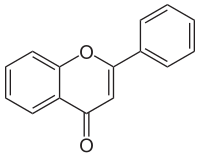
Photo from wikipedia
ETHNOPHARMACOLOGICAL RELEVANCE Paeonia plants have been widely used as traditional Chinese medicinal materials for more than 2,000 years in the treatment of cardiovascular, extravasated blood and female genital diseases; paeoniflorin… Click to show full abstract
ETHNOPHARMACOLOGICAL RELEVANCE Paeonia plants have been widely used as traditional Chinese medicinal materials for more than 2,000 years in the treatment of cardiovascular, extravasated blood and female genital diseases; paeoniflorin and paeonol have been implicated as the plants' primary active ingredients. AIM OF THE STUDY Previous studies have been singularly focused on the chemical constituents and content variation of the Paeonia roots in the advancement of traditional Chinese medicine, with the plants' stems and leaves considered useless. This study aims to explore the chemical constituents, content variations, and antioxidant capacity in Paeonia stems and leaves for the future utilization of traditional Chinese medicine, given that current practices of digging and trade endanger Paeonia in the wild. MATERIALS AND METHODS Herein, secondary metabolites from the stems and leaves from six developmental stages of the annual growth cycle of Paeonia ostii T. Hong & J. X. Zhang, P. 'Hexie', and P. lactiflora Pall. were qualitatively and quantitatively analyzed via high-performance liquid chromatography with a diode array detector (HPLC-DAD) and high-performance liquid chromatography quadrupole time-of-flight mass spectrometry (HPLC-Q-TOF-MS). Antioxidant capacity at each stage was also evaluated by various free radical scavenging assays. RESULTS A total of 24 metabolites were detected and identified, including 5 monoterpene glycosides, 4 tannins, 5 phenols, 9 flavonoids, and paeonol. Excepting paeonol and the phenols, the levels of each metabolite category were significantly higher in the leaves than the stems during all developmental stages. The paeoniflorin content in the P. ostii leaves was the highest during the first developmental stage and higher than the standards of the Chinese Pharmacopoeia, suggesting it to be the optimal harvesting stage for medicinal uses. Notably, the antioxidant capacity of the leaves was significantly greater than in the stems, particularly for the leaves of P. 'Hexie'. CONCLUSION Our study indicates that the leaves of P. 'Hexie' have the potential to be a worthy medicinal substitute to Paeonia roots due to their high monoterpene glycosides, phenols, and flavonoids as well as their strong antioxidant capacity. Further, this study provides a theoretical basis for the development and utilization of non-root Paeonia plant sections as medicinal plant resources.
Journal Title: Journal of ethnopharmacology
Year Published: 2021
Link to full text (if available)
Share on Social Media: Sign Up to like & get
recommendations!